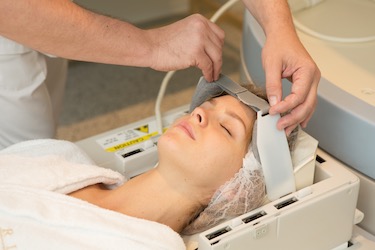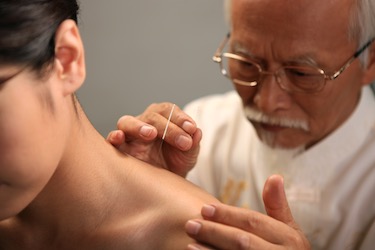We love to pass along research about new acupuncture studies. Here is another to dive into from Healthcmi. To see the ORIGINAL SOURCE go HERE
MRI studies reveal the neurological mechanisms of acupuncture on human health. Research published inAutonomic Neuroscience demonstrates that stimulation of specific acupuncture points induces hemodynamic changes in specific brain networks. The researchers add that brain networks accessed by specific acupuncture points relate to specific medical disorders and suggest an “acupoint-brain-organ” pathway. 
Functional magnetic resonance imaging (fMRI) studies reveal specific acupuncture point effects in the brain through blood-oxygen-level dependent (BOLD) measurements. In a meta-analysis of 82 fMRI studies, researchers found a large body of evidence supporting acupuncture point specificity. This applies to both manual acupuncture and electroacupuncture. True acupuncture point stimulation induced specific cortical effects whereas sham acupuncture did not. In addition, the researchers note that acupuncture point stimulation produces significantly “more positive and negative hemodynamic signal response(s) in brain regions compared with sensory stimulation used as a control condition.”
Many important findings were confirmed. Acupuncture exerted a stimulus that “could induce beneficial cortical plasticity in carpal tunnel syndrome patients.” It was also demonstrated that acupuncture relieved pain “by regulating the equilibrium of distributed pain-related central networks.”
The researchers note that a fundamental principle of Traditional Chinese Medicine (TCM) is that “specific acupoints have therapeutic effects on target organ systems remote from the needling site….” Recent fMRI investigations support this principle. The researchers note that “fMRI investigations regarding several acupoints have demonstrated that acupuncture stimulation at disorder-implicated acupoints modulates the activity of the disorder-related brain regions.”
In TCM, acupuncture point Neiguan (PC6) is indicated for the treatment of nausea and vomiting. The fMRI research supports this ancient principle. The researchers note, “Acupuncturing at Neiguan (PC6) could selectively evoke hemodynamic response of insula and cerebellar-hypothalamus in order to exert modulatory effects on vestibular functions, indicating the specific treatment effect on nausea and vomiting.”
Acupuncture point GB37 (Guangming), located on the lower leg, is indicated for the treatment of vision related disorders within the TCM system. The name of the point, Guangming, is translated as bright light and indicates the acupoint’s use in the treatment of visual disorders. It is categorized as a Luo-connecting point and has the TCM functions of regulating the liver and clearing vision. The point is indicated for the treatment of hyperopia (farsightedness), myopia (nearsightedness), night blindness, and eye pain. The research demonstrates that GB37 increases neural responses in the occipital cortex. The researchers add that it was “discovered that modulations in vision-related cortex (BA18/19) were responsive to the specificity of GB37….” This connection between fMRI findings and TCM indications confirms the specificity of GB37 for the treatment of visual disorders.
A broad body of research suggests “that acupuncture at different acupoints may modulate relatively specific cerebral areas,” according to the researchers. Acupoints demonstrating this phenomenon in fMRI include:
- Hegu (LI4)
- Zusanli (ST36)
- Taichong (LV3)
- Taixi (KI3)
- Qiuxu (GB40)
- Guangming (GB37)
- Jiaoxin (KI8)
- Auricular Brain Stem
- Sanyinjiao (SP6)
Many examples of acupoint cortical specificity were included in the research. The following are some highlights. The researchers note, “Acupuncture at the three classical acupoints of Hegu (LI4), ST36 and Taichong (LV3) produced extensive deactivation of the limbic-paralimbic-neocortical brain network as well as activation of its anti-correlated activation network.” Differentiation between the points was noted as the following, “LI4 was predominant in the pregenual cingulated and hippocampal formation, ST36 response was predominant in the subgenual cingulate, and LV3 in the posterior hippocampus and posterior cingulated….” Taixi (KI3) mediated the executive network, Qiuxu (GB40) activated the auditory network, and “Jiaoxin (KI8) was associated with (the) insula and hippocampus in pain modulation.” 
The mechanisms of cerebral action of true acupuncture were found distinct from sham acupuncture. The researchers note, “Acupuncture at Taichong (LR3) could specifically activate or deactivate brain areas related to vision, movement, sensation, emotion, and analgesia compared with sham acupuncture.” They add, “Several studies have found that there were different brain responses between traditional acupoints and sham points….” It was found that “ST36 could induce greater activation in ventrolateral periaqueductal gray (PAG) and produced linearly time-variant fMRI activities in limbic regions, such as amygdale and hippocampus….” Needling acupuncture point Erjian (LI2) activated the insula and operculi but this did not occur with sham acupuncture. Other research examples were cited. The researchers concluded, “These results provided evidence to support that acupoints may have its own functional specificity to sham point.”
A multiplicity of fMRI studies investigated the effects of deqi. The elicitation of deqi by acupuncture needling techniques is often described by patients as electrical, dull, or heavy. Deqi is often described by licensed acupuncturists applying manual acupuncture as a pulling or tugging sensation on the needle. The fMRI research shows “ that acupuncture with deqi induced extensive deactivation in limbic-paralimbic-neocortical network (LPNN) and activation in somatosensory regions of (the) brain.” Other research suggests that the bilateral postcentral gyrus, insula, ipsilateral inferior frontal gyrus, inferior parietal lobule, claustrum, and contralateral ACC are related to deqi elicitation. In addition, the researchers note that deqi sensations are directly “correlated with activation in sensorimotor and cognitive (dorsomedial prefrontal cortex) processing, and deactivation in DMN (default-mode network regions).”
The depth of needling affects cerebral responses to acupuncture. It was found that deep needling of KI3 elicits “more extensive connectivity related to therapeutic effect(s) of acupuncture in mild cognitive impairment patients” when compared with superficial needling. Other important clinical findings were documented. Acupuncture successfully regulated DMN and motor-related networks in stroke patients. The application of acupuncture to acupoints LR3 and LI4 activated cognitive related regions in Alzheimer’s disease and mild cognitive impairment (MCI) patients. The study notes that abnormal functional connectivity in the temporal regions of the hippocampus, thalamus, and fusiform gyrus for mild cognitive impairment patients “significantly improved.”
The mechanisms by which laser acupuncture exerts antidepressant effects was revealed in fMRI. The DMN (default mode network) is at its peak activity level when the brain is a rest and deactivates when the brain is task or goal oriented. Laser acupuncture to Ququan (LR8), Qimen (LR14), and Juque (DU14) stimulated both the anterior and posterior DMN in depressed and non-depressed individuals. However, posterior DMN modulation was wider in depressed individuals receiving laser acupuncture at the parieto-temporal-limbic cortices.
Acupuncture has also been shown to regulate DMN activity in Alzheimer’s disease patients. In addition, brain activation induced by acupuncture in healthy patients is different than brain activation induced in Parkinson’s disease patients. One study was found showing that “acupuncture may regulate the cardiovascular system through a complicated brain network from the cortical level, the hypothalamus, and the brainstem to improve body pain and vitality in primary hypertension patients.”
The researchers note that fMRI assists in understanding the neural effects of acupuncture. The researchers conclude, “Acupuncture could induce hemodynamic changes in a wide cortico-subcortical network, large portions of which are overlapped with the disorder-related areas, indicating that there maybe exist a specific pathway connecting “acupoint-brain-organ” underlying acupuncture induced therapeutic effects.”
If you are in San Diego and would like an Acupuncture Treatment, call us at 619-840-1875
Good day to you!



Recent Comments